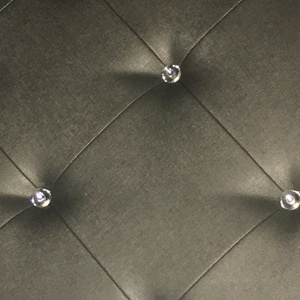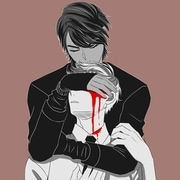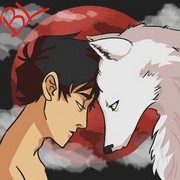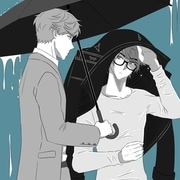Japan
Bullet Trains
Japanese bullet trains are one of the fastest forms of transportation. The maximum
operating speed is 320 km/h or 200 mph on a 387.6 km section of the Tōkaidō Shinkansen. Test runs have reached 443 km/h or 275 mph, for conventional rail in 1996, and up to a world record 603 km/h or 375 mph for maglev trains in April 2015 (4, 2:16 Safiya Nygaard).
Hot Springs
Japan has 110 active volcanoes, because of this there are a lot of natural hot springs and
manmade hot springs. The naturally occurring minerals in hot springs are thought to improve body circulation and heal certain skin conditions. The warm temperature of the water can help to provide stress relief and improve body pain (5, 5:00-5:04 Safiya Nygaard). Japan has a lot of hot springs theme parks, these theme parks are usually man made and have a variety of pools, they also have a Naked zone where swimsuits are not allowed but these theme parks also have a swimsuit area where your not allowed to be naked, this area is also more like a theme park rather than a hot springs. The naked zone has more of a traditional hot springs vibe to it rather than the swimsuit area. In the hot springs pools people share it like a communal bath or a regular pool or an ocean beach. (5, Safiya Nygaard)
Fashion
Harajuku is a neighborhood and not just a singular style as it can sometimes be presented
as. You can put the harajuku fashion of 2018 into 3 different categories, vintage remake style, mode style, and colorful layered style.
The vintage remake style which centers around transforming vintage clothing. A lot of
people like to take vintage items and cut it up and add things onto it so they're very unique. In the oda wadda neighborhood is just behind the main part of harajuku. Oda wadd is a more hipstery type of vintage area. In this style there aren't really rules. In the trend itself, a lot of people wear it form-fitting or just totally loose it’s all up to you. A lot of this fashion comes from punk, like music as well as the vintage fashions. There’s a strong emphasis on D.I.Y in punk style.
The mode style is more minimalistic you'll see a lot of people wearing this layering
black on black. Yohji Yamamoto is a japanese designer, he’s described as a master tailor who is known for his androgynous and avant-garde designs usually made in black. This style is defined by a monotone color palette, this style is also unisex or genderless, the usual selloete of this style is unsinched, flowy, or boxy. The style is simple and minimal.
The colorful layered style is when you layer thing on as much as you want, there can be
transparent, and colorful it's basically you could play with anything you want. This style is basically piling on as many clothes as you can, and often times with extra appliques or fabric stitched on to or hanging off of the layered garments. A lot of the clothes in this trend are loose and oversized. (3, Safiya Nygaard)
Lolita is also another Harajuku Fashion category but this one is more popular in 2019.
Lolita is a japanese subculture. Describing lolita in short would be poofy and frilly style inspired by vintage fashions from Victorian England and Rococo France. The lolita style has become an increasingly worldwide phenomenon, with lolita tea parties and harajuku fashion walks held all around the globe. Lolita fashion has been around since the 90s inspired by a variety of earlier japanese fashion trends and visual k-rock bands. As we mentioned before, lolita draws heavily from Victorian and Rococo aesthetics with the style goal being to blend feminine, sophisticated almost aristocratic looks with whimsical fantasy elements and a dash of cute. There’s a lot of lace, corsets, ruffles and too over the top accessories with a couple of notable style inspirations being Marie Antoinette and Alice from Alice in Wonderland. One of the biggest defining qualities of lolita fashion is the look of the overall shape, basically this cupcake silhouette a lot of fluff on the bottom. There are many subgenres of lolita fashion. That includes some of the same characteristics but have very different moods.(2, Safiya Nygaard)
Background
Much of Japan's early culture, including art, language, Buddhism and Confucianism was
derived from China and, over the years, has become Japanese. During a period of civil wars in the fifteenth and sixteenth a feudal system, much like that of medieval Europe, developed. Each lord had his knights, or samurai, who were bound to them by oaths of fealty. But it wasn't until the middle of the sixteenth century that the western world became interested in this island nation. In 1542 a Portuguese mariner, Fernando Mendez Pinto was wrecked there and brought back such glowing reports of the country that Portugal established a trading mission at Nagasaki. Soon Dutch merchants and European missionaries followed. In 1600 Tokugawa Ieyasu won a victory over the western lords and in 1603 became the Shoguns, founding a dynasty which effectively ruled Japan until 1867. An Englishman, William Adams, who had served under Sir Francis Drake and had been a pilot for the Barbary merchants, joined a Dutch fleet which sailed for Japan. After a troubled beginning there, the Shogun, Tokugawa, took a liking to him, and he was given a house. Jesuits and Japanese missionaries Christians acted as interpreters. The emperor sent for him and asked him to build a ship. Although Adams knew nothing about shipbuilding, he was so successful that the Emperor gave him two swords (the mark of a samurai). He also taught the emperor some mathematics. Although Adams had a wife in England, the emperor declared that William Adams was dead and reborn as Miura Anjin, free to marry again. He married a high-born Japanese woman, but eventually wished to go home. Permission was refused, he built another, larger ship and had over 80 retainers. He died in Japan in 1620. James Clavell's novel Shogun based on his experiences. Soon the Exclusion Decrees were published and Japan was closed to the West. After it was reopened in 1854, the Western world became fascinated with all things Japanese. Commodore Perry had opened to view a society and culture which had been hidden for hundreds of years. Soon exhibitions of Japanese art opened throughout the United States and Europe and japonisme became the rage as chinoiserie had been a century before. Japanese motifs such as bridges, fans, cranes, butterflies, and bamboo were incorporated into Western art and furnishings. Literature also responded to the influx of new themes. Poets such as Whitman, Longfellow and Yeats incorporated Japanese images into their works. Stories set in Japanese locals were written and several of these merged into the one depicted in Puccini's Madama Butterfly.











Comments (0)
See all